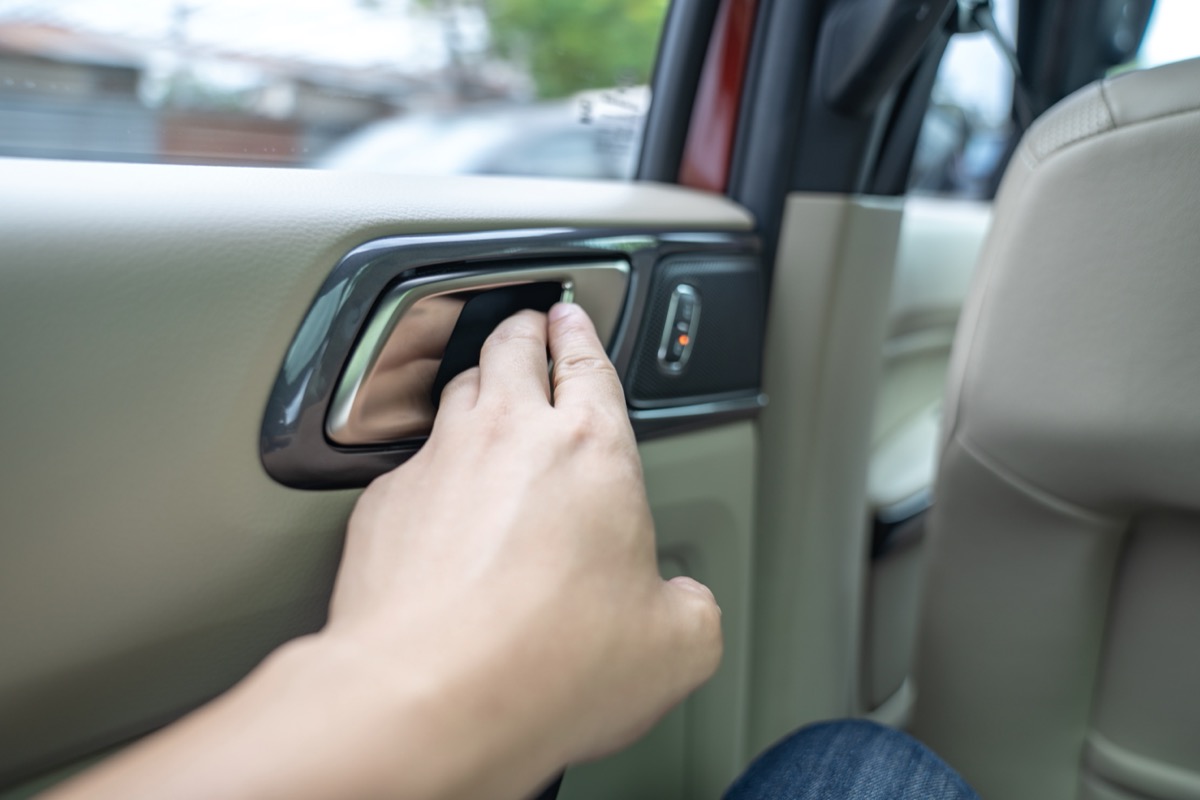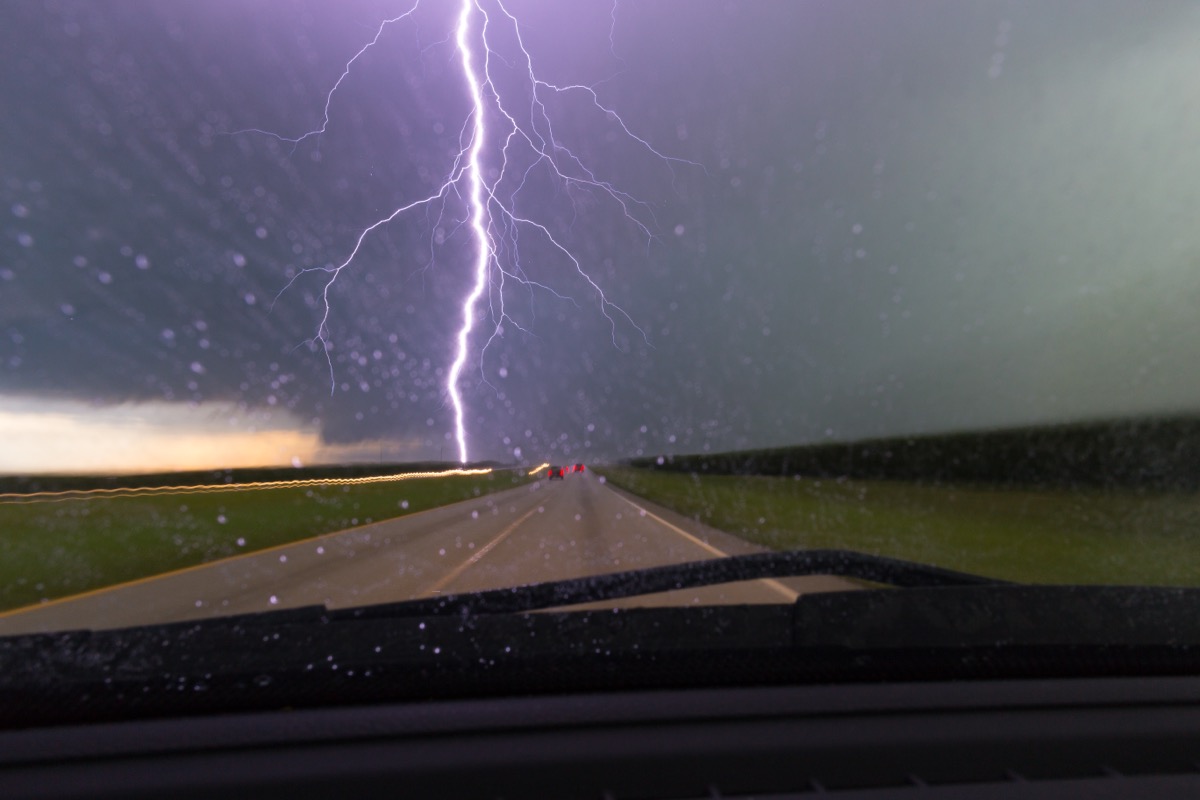RELATED: If You See This While Driving, Turn Around Immediately, CDC Says. While it may seem as though you’re protected during a thunderstorm as long as you remain inside your vehicle, touching the door handle of your car during a storm may put you at risk for electrocution from a lightning strike, according to the National Lightning Safety Institute.ae0fcc31ae342fd3a1346ebb1f342fcb Though many people believe that their car’s rubber tires will protect against lightning hazards, Richard Kithil, president of the National Lightning Safety Institute (NLSI), explained to AccuWeather.com (via LiveScience) that that’s not the case. Instead, it’s the car’s metal frame that helps divert electricity away from the driver, according to Kithil. Though driving in an enclosed metal car with the windows up during a thunderstorm may be relatively safe, not all vehicles offer equal protection against lightning strikes. According to the Centers for Disease Control and Prevention (CDC), non-enclosed vehicles like convertibles, motorcycles, and golf carts offer no protection against lightning. Similarly, the NLSI reports that fiberglass vehicles may not be effective at protecting you against lightning due to the so-called “skin effect,” which can occur in metal vehicles, during which the exterior metal shell “will carry most of the lightning on outer surfaces,” the NLSI states. For the latest summer safety news delivered straight to your inbox, sign up for our daily newsletter! While your car’s door handle may present one of the biggest risks to you inside a vehicle during a thunderstorm, it’s not the only part of the car you should avoid touching. The NLSI also cautions against touching your car’s window mechanism, steering wheel, and gear shift during a storm, as well as keeping your windows closed for the duration of the storm. To best protect yourself, the NLSI recommends keeping your hands in your lap to avoid accidentally touching an electrified surface. Even if you no longer see lightning or hear thunder, you could still be at risk for a lightning strike, the National Weather Service (NWS) reports. The weather authority explains that lightning can strike up to 12 miles away from a thunderstorm. “If you can hear thunder you are close enough to a storm to be in danger of being struck by lightning,” the NWS says. In order to roughly calculate how far a storm is from you, the NWS recommends counting the number of seconds between claps of thunder. Every five seconds you can count between thunderclaps suggests the approximate distance of a mile between you and a storm. However, as a precaution, the NWS recommends staying indoors for at least 30 minutes after you hear the last thunderclap. RELATED: If You See This in a Hot Tub, Don’t Go In, Experts Say.



